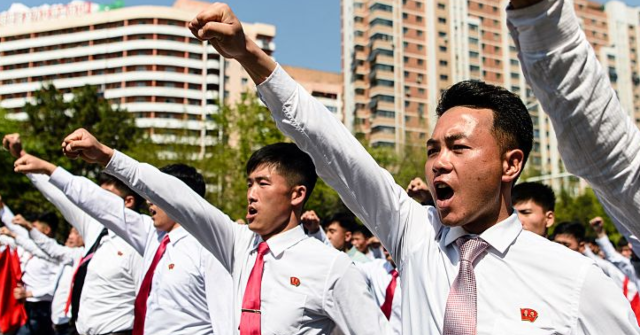South Korea’s central bank, the Bank of Korea (BOK), estimated on Friday that North Korea’s economy grew by 3.7 percent in 2024, its fastest rate of growth in eight years.
BOK analysts said much of this growth was due to North Korea’s deepening economic ties to Russia.
BOK said North Korea’s growth spurt is “mainly due to significant increases in manufacturing, construction, and mining industries, which were affected by strengthening of national policy projects domestically, and expansion of economic cooperation between North Korea and Russia externally.”
The North Korean economy was all but stagnant two years ago, but it grew by 3.1 percent in 2023 and 3.7 percent in 2024. Certain sectors grew even faster, such as heavy chemicals, which posted 10.7 percent growth last year — in large part because North Korea began supplying munitions for Russia’s war in Ukraine.
The Korea Institute for Defense Analysis (KIDA) estimated in April that North Korea has enjoyed about $20.6 billion in economic benefits from supplying troops and soldiers to Russia for use in Ukraine. Ukrainian intelligence reports say North Korea has provided Russia with large inventories of old and surplus equipment and ammunition, in addition to Pyongyang’s infamous deployment of cannon-fodder troops to help Russia recapture territory from Ukraine’s counter-invasion.
Mining and manufacturing, which account for 30 percent of the North Korean economy, grew by 7.6 percent for similar reasons. The construction sector expanded by 12.3 percent, driven by a large-scale government program to rebuild dilapidated rural houses and address “the backwardness of the countryside.” The regime has been touting the success of this program by broadcasting move-in ceremonies when families move into their rebuilt homes.
The formerly dominant agricultural industry fell by 1.9 percent to just under 21 percent of the North Korean economy, and the service industry experienced a similar decline. This economic shift suggests a fair number of North Korean workers moved up from traditionally low-paying occupations.
This week’s BOK estimate was the highest growth estimate for North Korea since 2016, when the economy grew at 3.9 percent. After 2016, North Korea sharply reduced trade with South Korea, bringing it to effectively zero in 2023.
The North Korean economy is still tiny compared to its southern neighbor, weighing in at roughly $1,239 per capita, compared to over $36,000 per capita for South Korea.
The South Korean government’s Korea Trade Promotion Agency (KOTRA) noted that North Korea has a gigantic trade deficit, in part because so many of its exports have been blocked by sanctions.
KOTRA observed in July that North Korea continues to rely heavily on China for trade, but it has also been defying sanctions to supply goods such as electronics to India, auto parts to the Netherlands, iron to Indonesia, and textiles to Mozambique and Senegal.















